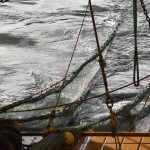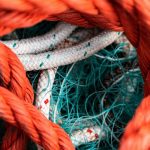Less than two weeks after the New York Times ran a story questioning the sustainability of New Zealand’s hoki fisheries [From Deep Pacific, Ugly and Tasty, With a Catch, 09/09/09], the newspaper apologized for its conduct in reporting the story, saying that “there was no intention of slighting the people in the fishing industry in New Zealand.”
The admission from New York Times Science Editor Laura Chang came during an email exchange that began on September 16, when a letter from the New Zealand Seafood Industry was delivered to the newspaper protesting a series of omissions and distortions contained in the 9 September 2009 article authored by long-time science reporter William J. Broad. “It makes perfect sense that the New Zealand Seafood Industry wishes that it had been contacted directly for comment on hoki issues. Let me assure you that I was not suggesting that the people who do the fishing are unimportant.”
The letter, as well as the complete exchange between the newspaper and the New Zealand Seafood Industry can be found at: http://www.seafoodindustry.co.nz/nzhoki. In addition to that stunning admission, Chang also wrote that the newspaper had reprimanded a photo editor for using one of the trade association’s photos without permission, while also seeking to clarify its imprecise comparison of the hoki to the orange roughy.
“We were surprised that you said in your second note that a hoki photo was taken from your website without permission,” wrote Chang in her response to the New Zealand Seafood Industry. Our policy is to contact the owners of an image before publication. We have talked to the pertinent photo editor, who was a substitute for our regular photo editor; the substitute editor said she was under heavy deadline pressure that day and had hoped crediting the site would be sufficient. We told her that this was unacceptable, and we offer our apologies to your organization.”
“Your concerns about the references to orange roughy seem to be based on a more technical reading of ‘forerunner’ than we intended,” Chang added.
“While we accept the newspaper’s apology, I think this episode represents a cautionary tale for those managing sustainably harvested seafood when it comes to dealing with the media,” said New Zealand Seafood Industry’s DeepWater Group chief executive George Clement. “It’s clear to us that, despite the apology, the Times reporter approached this story with a number of pre-conceived notions without regard to the facts, and simply wrote his article to snugly fit those same notions. While we have come to expect this bias from advocacy groups who rarely let the facts to get in the way of good scare campaign, we expect a duty of care from journalists to inform their readers of the facts,” Clement said.
“Although the Times says that they didn’t want to imply that the very people doing the fishing are ‘unimportant,’ their actions suggest otherwise. It seems clear that inside of the New York Times newsroom that the people who actually do the fishing have been completely disregarded in favor of giving voice to environmental activists who attack the industry, particularly when those attacks have no scientific merit. It is also important, once again, to point out that the Times also failed to contact the Marine Stewardship Council (MSC), the body charged with certifying the hoki fisheries as sustainable. Once activists had publicly attacked the MSC’s judgment on the sustainability of the hoki fisheries, the Times had a basic journalistic duty to contact the Council and allow them an opportunity to rebut those charges.”
“In the end, it’s difficult not to note one more irony: while the New York Times sought to portray New Zealand’s hoki fishermen as failing to live up to their standards when it comes to quality practices of sustainability, the fact of the matter is that the New York Times failed to live up to its own standards when it comes to quality practices of journalism.”








